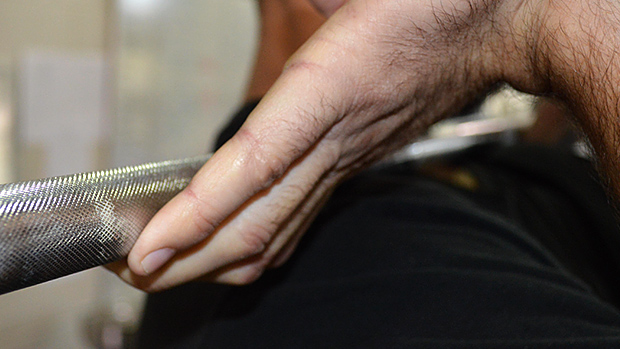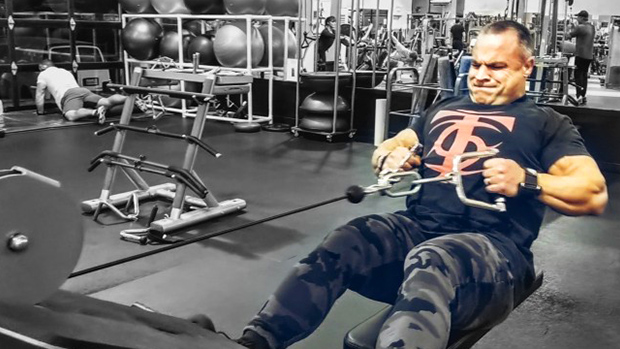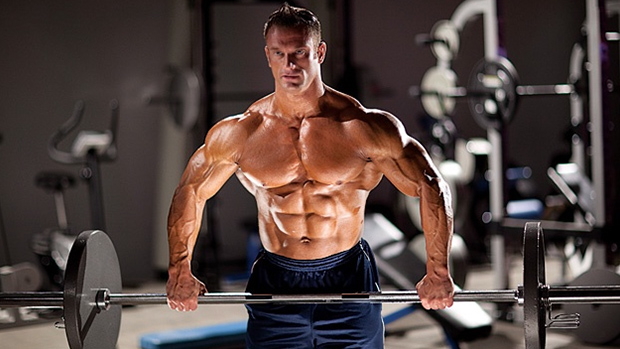Here's what you need to know...
- If you struggle with your pull, make sure you dedicate one day per week to pulling.
- If your goal is to tax the posterior chain, straps will ensure your grip doesn't fail before your bigger muscle groups do.
- To work the lockout, block pulls are king.
- Deficit deadlifts are great for building bottom-end strength and speed off the floor.
- Paused deadlifts build deadlift strength by increasing time under tension, while snatch-grip deadlifts build the deadlift by increasing the range of motion.
- Conventional deadlifts work the back and hamstrings more while sumo deadlifts are great for hip and leg strength. Train both.
Not Built For Deadlifting

Frankly, I'm not built for deadlifting. My arms and fingers are too short and my thighs always get in the way of my lockout. But rather than curse my misfortune, I simply decided to use whatever knowledge I had available to pull big. And I did.
There was, however, a three year period where I was stuck in the low 500-pound range. But once I learned a few tricks, my pull skyrocketed to over 600 and I even pulled 700 this summer.
I've tried about everything to improve my pull and I've learned a lot, so if you're into pulling, get your notepad ready. It's time to set some pulling PRs!
1 – Have a dedicated deadlift day.
This may sound really obvious, but many lifters don't dedicate a day to pulling.
Sure, they'll train the squat using the Westside template with great success and they'll usually do some sort of squat variation or good morning on max effort day and then box squats on the dynamic day. They may do speed pulls after box squats, but it's usually a second movement, and deadlifts are seldom done on max effort day.
It wasn't any different with me. When my team and I made the change to a dedicated deadlift day, our number of 600-pound deadlifters increased drastically. We even have five people who can now pull over 700. Not too shabby.
So the first tip is pretty basic. If you struggle with your pull, make sure you dedicate one day per week to pulling. It doesn't need to be heavy all the time. Speed work and volume work is great too, but make sure you're pulling frequently enough to truly dial in your technique.
2 – Strap it up!

You may be saying to yourself, "Did I just read that correctly?"
Yes, use lifting straps. Look at any strong deadlifter. Almost every strong puller utilizes straps in training at some point.
Straps allow you to overload the deadlift, as well as take the grip out of the equation. This is especially true if you're performing high reps. If your goal is to tax the posterior chain, using straps will ensure your grip doesn't fail before your bigger muscle groups do.
They also help protect the hands. If you're pulling on a deadlift bar, your hands are going to get chewed up with high reps. If you tear a callus, you can't train, so be wise and make sure you aren't doing too much high-rep work without straps.
Most lifters think that using straps will kill grip gains and hurt their pull. They should consider that they probably can't handle the volume and intensity they need to progress if they pull with bare hands all the time.
However, my advice is to not use straps during your max effort pulls. Sets of 1-3 reps should be done without straps so you're confident in your grip strength and technique. Using straps can certainly throw off your form if you use them too frequently.
3 – Work the top and bottom range.
It's important to utilize special exercises to help build the top and bottom of the lift.
These supplemental moves should be done after the primary deadlift work sets. Generally, sets of 5-8 reps work best, but heavier triples and singles can be done on occasion in place of traditional deadlifts.
To work the lockout, block pulls are king. These are better than rack pulls since the bar flexes just like it would off the floor. If you don't have blocks, you can stack up plates or steps.
There are just too many ways to cheat when pulling off pins. And when it comes down to it, you can't really mimic the proper deadlift position unless you're pulling off blocks. It just transfers better.
For bottom-end strength and floor speed, deficit deadlifts are awesome. Standing on a plate will make the start much harder and help build the bottom of a deadlift.
This is extremely important if you have trouble moving weights off the floor. No need to go crazy with the height on these. A few inches is fine for deficit pulls and can lead to huge gains.
4 – Make it harder and longer.
Making your pulls harder and longer can greatly aid your strength. The added range of motion and time under tension will help build up the deadlift effectively. Two great ways to do this are paused deadlifts and snatch-grip deadlifts.
Paused deadlifts: A paused deadlift is a deadlift performed with "halts," which are just pauses at certain points in the lift. You can pause at any point you like, but in general, mid-shin and just below the knee work really well.
The paused deadlifts will increase the overall time under tension since you're stopping at certain points in the lift. This exercise will not only build back strength, but also technique.
The thing is, if you don't find the proper position during a pause at a weak point, you won't be able to complete the lift. As such, paused deadlifts force you to learn proper position at different stages in the lift.
Snatch-grip deadlifts: A snatch grip deadlift is a wide-grip deadlift. By taking a wider grip you'll extend the range of motion of the pull. This causes the bar to lock out much higher and increases the time under tension.
Snatch-grip deads work the back and legs in a unique way. If you want to extend the range of motion even more, you can also wear shoes with a heel. This is a brutal exercise, but it works great in building up the entire backside.
Use straps for both exercises so you can save your grip and maximize gains.
5 – Train with the opposite stance.
You should train with both stances, conventional and sumo. Conventional deadlifts work the back and hamstrings more while sumo deadlifts are great for hip and leg strength.
Of course, they both work the entire posterior chain, but the emphasis is quite different. Getting strong in both styles will help you in achieving total pulling prowess.
For conventional deadlifters, adding in sumo pulls can also help give them hip strength and give their lower back a break. Sumo pulls can increase your squat because of the increase in hip strength. It's not of paramount importance to master both styles, but it's smart to train both since they work different muscle groups and can aid in getting you stronger overall.
6 – Perform deep squats.
In order to have a great pull, you can't just rely on a strong back. You need strong legs as well.
Deep squatting variations will help your deadlift strength off the floor so you can utilize your legs as well as your back to get the bar moving. Some special squat variations will also work the upper back and core in a unique way, which will also help with your pulling strength.
Front squats and pause squats with a safety bar (straight bar works great, too but the safety squat bar just throws you forward more) are great squat variations for improving the deadlift. Both of these exercises require a ton of upper back and core strength.
7 – Train with people who pull more than you.
The deadlift can be a very mental lift so it's important to be in the right state of mind. Likewise, surrounding yourself with positive and motivating people is huge for success in anything and it can certainly help your pull.
To help beat home the points, here are two examples of a deadlift workout that incorporates the above principles.
Max Effort Day
| Exercise | Sets | Reps | |
|---|---|---|---|
| A | Front Squat work up to heavy triple without straps | ||
| B | Competition Stance Paused Deadlift with straps, 3-second pause at mid shin | 3 | 5 |
| C | Front Squat | 3 | 8 |
| D1 | Hanging Leg Raise (ab work) | 2 | 12 |
| D2 | Back Extension (posterior chain work) | 2 | 12 |
| D3 | Hex Hold (grip) | 2 | 1 min. |
| D4 | Low Cable Row | 2 | 20 |
Dynamic Effort Day
| Exercise | Sets | Reps | |
|---|---|---|---|
| A | Speed Pull with 70% bar weight plus chains | 6 | 2 |
| B | Deficit Deadlift with straps | 3 | 5 |
| C | Safety Bar Pause Squat with 3-second pause | 3 | 8 |
| D1 | Side Bend (ab work) | 2 | 12 |
| D2 | Leg Curl (posterior chain work) | 2 | 12 |
| D3 | Plate Pinch (grip) | 2 | 1 min. |
| D4 | Lat Pulldown | 2 | 20 |





